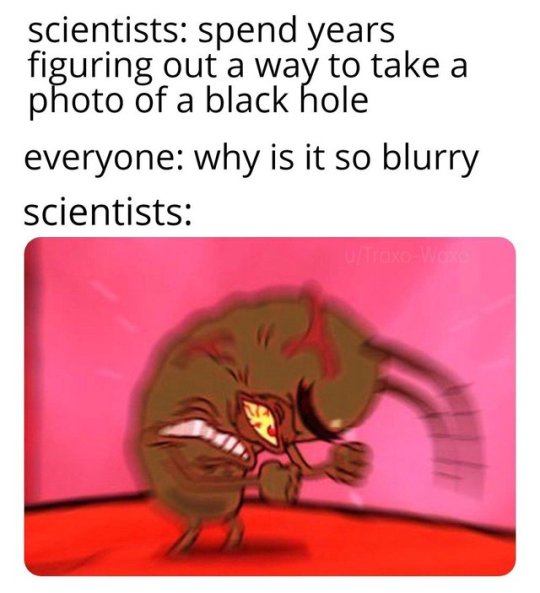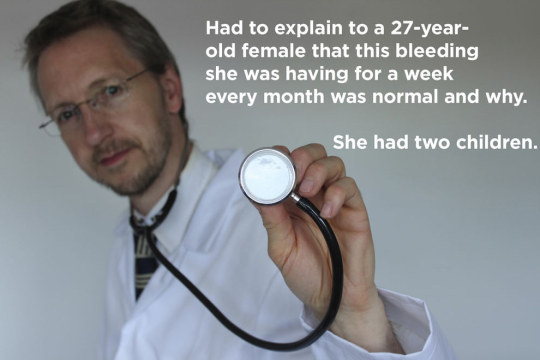Text
Sepsis - Symptoms and causes
September is Sepsis Awareness Month
youtube
Sepsis is a life-threatening complication of an infection.
Sepsis occurs when chemicals released in the bloodstream to fight an infection trigger inflammation throughout the body. This can cause a cascade of changes that damage multiple organ systems, leading them to fail, sometimes even resulting in death. Symptoms include fever, difficulty breathing, low blood pressure, fast heart rate, and mental confusion.
25 notes
·
View notes
Link
Researchers at King’s College London found that the drug Tideglusib stimulates the stem cells contained in the pulp of teeth so that they generate new dentine – the mineralised material under the enamel.
Teeth already have the capability of regenerating dentine if the pulp inside the tooth becomes exposed through a trauma or infection, but can only naturally make a very thin layer, and not enough to fill the deep cavities caused by tooth decay.
But Tideglusib switches off an enzyme called GSK-3 which prevents dentine from carrying on forming.
Scientists showed it is possible to soak a small biodegradable sponge with the drug and insert it into a cavity, where it triggers the growth of dentine and repairs the damage within six weeks.
The tiny sponges are made out of collagen so they melt away over time, leaving only the repaired tooth.
143K notes
·
View notes
Photo

CONGRATULATIONS ON YOUR NOBEL PRIZE!!!
Emmanuelle Charpentier and Jennifer A. Doudna have discovered one of gene technology’s sharpest tools: the CRISPR/Cas9 genetic scissors. Using these, researchers can change the DNA of animals, plants and microorganisms with extremely high precision. This technology has had a revolutionary impact on the life sciences, is contributing to new cancer therapies and may make the dream of curing inherited diseases come true.
21 notes
·
View notes
Video
(source)
this video really helped me feel more confident that i was washing my hands the right way
57K notes
·
View notes
Text
Researchers urge prescribing caution as macrolides linked with birth defects
- Macrolides are penicillin alternatives used to treat skin, lung and genital infections.
- Around three percent of pregnant women are given these drugs.
- But there is a risk they increase babies’ chances of heart, brain or genital defects.
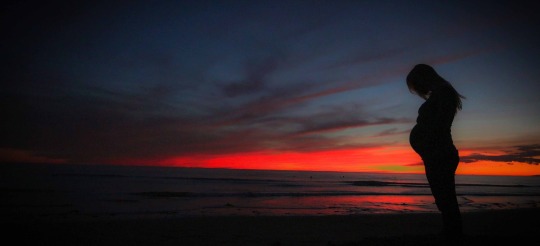
Macrolide antibiotics include erythromycin, clarithromycin, and azithromycin, and are among the most frequently prescribed antibiotics during pregnancy.
The study, published in the medical journal BMJ, included primary care data on more than 100,000 children born to women prescribed antibiotics during pregnancy, as well as more than 50,000 of their siblings, and a further 80,000 children born to mothers who took antibiotics before conception.
The study analyzed data from more than 104,600 children born in the U.K. between 1990 and 2016. Their mothers were either prescribed penicillin or macrolides.
The researchers found that an increased risk of neonatal heart defects with macrolides was most notable, with a 62% increased risk (10.6 vs. 6.6 per 1,000) compared with penicillin.
Overall, researchers looked at five malformations in the newborn children, including those of the nervous system (1.27 vs. 1.01 per 1,000), gastrointestinal system (1.51 vs. 0.91 per 1,000), genitals (4.75 vs. 3.07 per 1,000) and urinary system (1.39 vs. 1.52 per 1,000) in addition to the cardiovascular system.
They also found macrolide prescribing in any trimester to be associated with similar increased risk (58%) of neonatal genital malformations.
The researchers reported that there was no association between macrolide antibiotics at any point during pregnancy with an increased risk of neonatal cerebral palsy, epilepsy, attention deficit hyperactivity disorder or autism spectrum disorder.
The team said that the findings: “call for cautious use of macrolides during pregnancy.”
“Drug safety leaflets should report that there are concerns about the safety of macrolides, including erythromycin, and recommend the use of alternative antibiotics when feasible until further research is available.”
Study author Professor Ruth Gilbert, also at UCL Great Ormond Street Institute of Child Health, said in a news release that “it would be better to avoid macrolides during pregnancy if alternative antibiotics can be used”.
However, she underlined that “women should not stop taking antibiotics when needed, as untreated infections are a greater risk to the unborn baby”.
youtube
27 notes
·
View notes
Photo
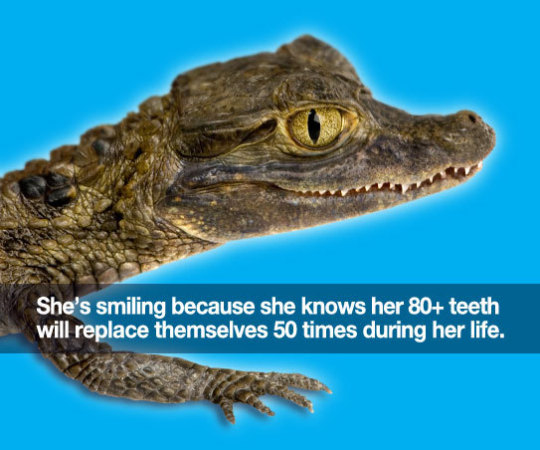
#i had a pedodontic patient yesterday and his parents thought since he is a child he has endless supply of deciduous teeth#his permanent molar needed endodontic treatment and they wanted to get it extracted#parent even asked 'but his new tooth will erupt right' that's why they wanted to extract the tooth#dentistry
149K notes
·
View notes
Text
Allergy Season Explained
Happy First Day of Spring, Tumblr!
What better way to celebrate than to **ACHOO!!**….wait, what were we saying?

Ah, spring! Grass growing, flowers blooming, trees growing new leaves, but if you get allergies, this explosion of new life probably inspires more dread than joy.

Step outside, and within minutes, you’re sneezing and congested. Your nose is running, your eyes are swollen and watery, your throat is itchy. For you and millions of others, it’s seasonal allergy time. So what’s behind this onslaught of mucus?

The answer lies within you. It’s your immune system. Seasonal allergies, also called hay fever, or allergic rhinitis, are a hypersensitive immune response to something that’s not actually harmful. Pollen from trees and grass, and mold spores from tiny fungi find their way into your mucous membranes and your body attacks these innocuous travelers the same way it would infectious bacteria.
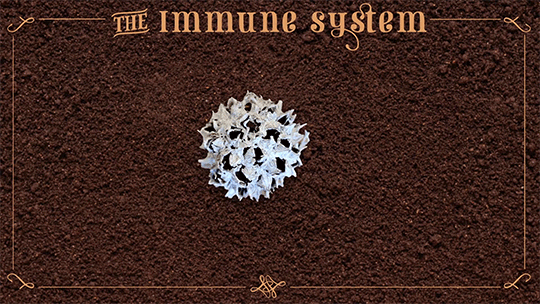
The immune system has a memory. When a foreign substance gets tagged as threatening, white blood cells produce customized antibodies that will recognize the offender the next time around. They then promptly recruit the body’s defense team. But sometimes, the immune system accidentally discriminates against harmless substances, like pollen. When it wafts in again, antibodies on the surface of white blood cells recognize it and latch on.

This triggers the cell to release inflammatory chemicals, like histamine, which stimulate nerve cells, and cause blood vessels in the mucous membranes to swell and leak fluid. In other words, itchiness, sneezing, congestion, and a runny nose.

Allergies usually, but not always, show up for the first time during childhood. But why do some people get allergies and others don’t? Allergies tend to run in families, so genetics may be one culprit. In fact, errors in a gene that helps regulate the immune system are associated with higher rates of allergies. The environment you grow up in matters, too. Being exposed to an allergen as a baby makes you less likely to actually develop an allergy to it. People who grow up on farms, in big families, and in the developing world also tend to have fewer allergies, although there are plenty of exceptions, partly thanks to genetics. One theory is that as children, they encounter more of the microbes and parasites that co-evolved with traditional hunter-gatherer societies.

Called the hygiene hypothesis, the idea is that when the immune system isn’t exposed to the familiar cast of microbes, it’ll keep itself busy mounting defenses against harmless substances, like pollen. Another theory is that an immune system toughened up by a barrage of pathogens is less likely to overreact to allergens. Pollen is a common offender, just because we encounter so much of it, but there’s a long list of substances: dust, animal dander, insect venom, medications, certain foods, that can send your immune system into overdrive. Some of these reactions can be scary. An allergy can develop into full-blown anaphylaxis, which typically brings on severe swelling, shortness of breath, and very low blood pressure. It can be deadly.
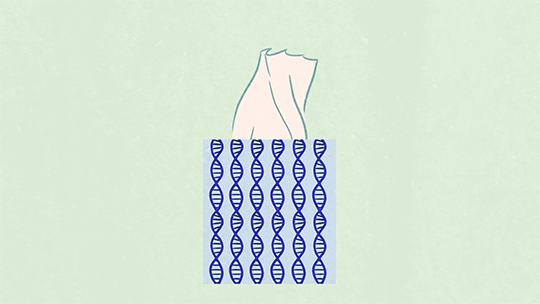
But as we who suffer from seasonal allergies know, even non-life threatening allergy symptoms can make you miserable. So what can you do about it? Medications can help reduce the symptoms. The most common ones keep histamines from binding to your cells. These antihistamines stop the inflammation response. Steroids can help dial down the immune system. Another more permanent option is immunotherapy. Deliberate, controlled exposure to gradually increasing amounts of an allergen can teach the immune system that it isn’t dangerous after all.

Of course, you can always just wait your seasonal allergies out. The spring pollen onslaught dwindles by mid-summer…just in time for ragweed season!
From the TED-Ed Lesson Why do people have seasonal allergies? - Eleanor Nelsen
Animation by TED-Ed
722 notes
·
View notes
Text
Two are Better Than One: The NASA Twins Study
What exactly happens to the human body during spaceflight? The Twins Study, a 340-day investigation conducted by NASA’s Human Research Program , sought to find answers. Scientists had an opportunity to see how conditions on the International Space Station translated to changes in gene expression by comparing identical twin astronauts: Scott Kelly who spent close to a year in space and Mark Kelly who remained on Earth.
The Process

From high above the skies, for almost a year, astronaut Scott Kelly periodically collected his own blood specimens for researchers on the ground during his One-Year Mission aboard the Space Station. These biological specimens made their way down to Earth onboard two separate SpaceX Dragon vehicles. A little bit of Scott returned to Earth each time and was studied by scientists across the United States.
Totaling 183 samples from Scott and his brother, Mark, these vials helped scientists understand the changes Scott’s body underwent while spending a prolonged stay in low Earth orbit.
The Twins

Because identical twins share the same genetic makeup, they are very similar on a molecular level. Twin studies provide a way for scientists to explore how our health is impacted by the environment around us.
What We Learned: Gene Expression
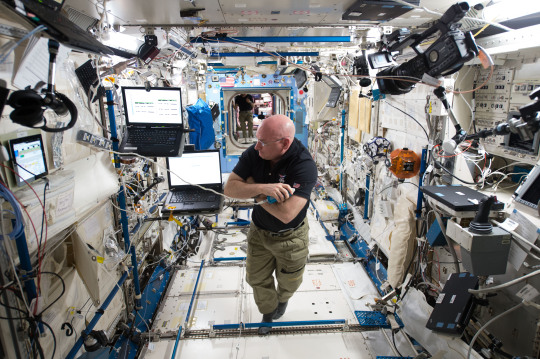
A significant finding is the variability in gene expression, which reflects how a body reacts to its environment and will help inform how gene expression is related to health risks associated with spaceflight. While in space, researchers observed changes in the expression of Scott’s genes, with the majority returning to normal after six months on Earth. However, a small percentage of genes related to the immune system and DNA repair did not return to baseline after his return to Earth. Further, the results identified key genes to target for use in monitoring the health of future astronauts and potentially developing personalized countermeasures.
What We Learned: Immunome

Another key finding is that Scott’s immune system responded appropriately in space. For example, the flu vaccine administered in space worked exactly as it does on Earth. A fully functioning immune system during long-duration space missions is critical to protecting astronaut health from opportunistic microbes in the spacecraft environment.
What We Learned: Proteomics

Studying protein pathways in Scott enabled researchers to look at fluid regulation and fluid shifts within his body. Shifts in fluid may contribute to vision problems in astronauts. Scientists found a specific protein associated with fluid regulation was elevated in Scott, compared with his brother Mark on Earth.
What We Learned: Telomeres
The telomeres in Scott’s white blood cells, which are biomarkers of aging at the end of chromosomes, were unexpectedly longer in space then shorter after his return to Earth with average telomere length returning to normal six months later. In contrast, his brother’s telomeres remained stable throughout the entire period. Because telomeres are important for cellular genomic stability, additional studies on telomere dynamics are planned for future one-year missions to see whether results are repeatable for long-duration missions.
What We Learned: Cognition
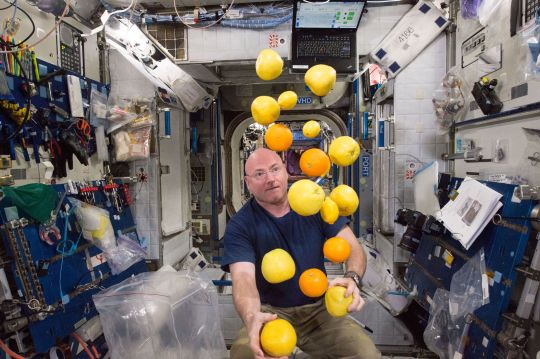
Scott Kelly participated in a series of cognitive performance evaluations (such as mental alertness, spatial orientation, and recognition of emotions) administered through a battery of tests and surveys. Researchers found that during spaceflight, Scott’s cognitive function remained normal for the first half of his stay onboard the space station compared to the second half of his spaceflight and to his brother, Mark, on the ground. However, upon landing, Scott’s speed and accuracy decreased. Re-exposure to Earth’s gravity and the dynamic experience of landing may have affected the results.
What We Learned: Biochemical

In studying various measurements on Scott, researchers found that his body mass decreased during flight, likely due to controlled nutrition and extensive exercise. While on his mission, Scott consumed about 30% less calories than researchers anticipated. An increase in his folate serum (vitamin B-9), likely due to an increase of the vitamin in his pre-packaged meals, was also noted by researchers. This is bolstered by the telomeres study, which suggests that proper nutrition and exercise help astronauts maintain health while in space.
What We Learned: Metabolomics
Within five months of being aboard the space station, researchers found an increase in the thickness of Scott’s arterial wall, which may have been caused by inflammation and oxidative stress during spaceflight. Whether this change is reversible is yet to be determined. They hope these results will help them understand the stresses that the human cardiovascular system undergoes during spaceflight.
In addition, the results from the Microbiome, Epigenomics, and Integrative Omics studies suggest a human body is capable of adapting to and recovering from the spaceflight environment on a molecular level.
Why Does This Matter?

The data from the Twins Study Investigation will be explored for years to come as researchers report some interesting, surprising, and assuring data on how the human body is able to adapt to the extreme environment of spaceflight. This study gave us the first integrated molecular view into genetic changes, and demonstrated the plasticity and robustness of a human body!
We will use the valuable data to ensure the safety and health of the men and women who go on to missions to the Moon and on to Mars.
Learn more with this video about these fascinating discoveries!
Make sure to follow us on Tumblr for your regular dose of space: http://nasa.tumblr.com
5K notes
·
View notes
Text
Our Favorite Valentines Throughout the Universe
Today is Valentine’s Day. What better way to express that you love someone than with an intergalactic love gram? Check out some of our favorites and send them to all of your cosmic companions:
Your love is galactic

The Hubble Space Telescope revolutionized nearly all areas of astronomical research — and captured some truly lovely images. Here, a pair of intersecting galaxies swirl into the shape of a rose as a result of gravitational tidal pull. What type of roses are you getting for your love — red or galactic?
I think you’re n{ice}

IceBridge is the largest airborne survey of Earth’s polar ice ever flown. It captures 3-D views of Arctic and Antarctic ice sheets, ice shelves and sea ice. This lovely heart-shaped glacier feature was discovered in northwest Greenland during an IceBridge flight in 2017. Which of your lover’s features would you say are the coolest?
You’re absolutely magnetic

Even though we can’t see them, magnetic fields are all around us. One of the solar system’s largest magnetospheres belongs to Jupiter. Right now, our Juno spacecraft is providing scientists with their first glimpses of this unseen force. Is your attraction to your loved one magnetic?
You’re MARS-velous

This heart-shaped feature on the Martian landscape was captured by our Mars Reconnaissance Orbiter. It was created by a small impact crater that blew darker material on the surface away. What impact has your loved one had on you?
I <3 you
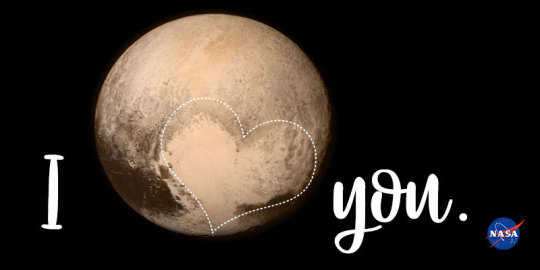
From three billion miles away, Pluto sent a “love note” back to Earth, via our New Horizons spacecraft. This stunning image of Pluto’s “heart” shows one of the world’s most dominant features, estimated to be 1,000 miles (1,600 km) across at its widest point. Will you pass this love note on to someone special in your life?
Light of my life

Our Solar Dynamics Observatory keeps an eye on our closest star that brings energy to you and your love. The observatory helps us understand where the Sun’s energy comes from, how the inside of the Sun works, how energy is stored and released in the Sun’s atmosphere and much more. Who would you say is your ray of sunshine?
Do any of these cosmic phenomena remind you of someone in your universe? Download these cards here to send to all the stars in your sky.
Want something from the Red Planet to match your bouquet of red roses? Here is our collection of Martian Valentines.
Make sure to follow us on Tumblr for your regular dose of space: http://nasa.tumblr.com
4K notes
·
View notes
Text
AI, Cancer Therapy and Chemical Gardens Headed to Space Station
A new batch of science is headed to the International Space Station aboard the SpaceX Dragon on the company’s 15th mission for commercial resupply services. The spacecraft will deliver science that studies the use of artificial intelligence, plant water use all over the planet, gut health in space, more efficient drug development and the formation of inorganic structures without the influence of Earth’s gravity.
Take a look at five investigations headed to space on the latest SpaceX resupply:

Credits: DLR
As we travel farther into space, the need for artificial intelligence (AI) within a spacecraft increases.

Credits: DLR
Mobile Companion, a European Space Agency (ESA) investigation, explores the use of AI as a way to mitigate crew stress and workload during long-term spaceflight.
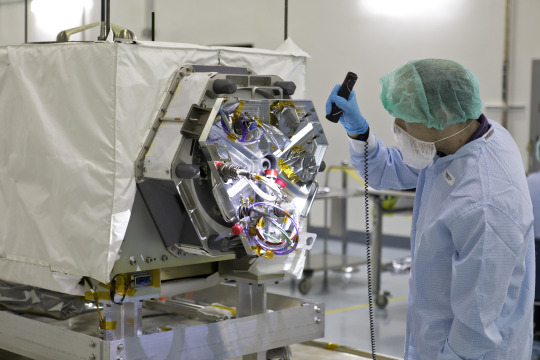
Credits: DLR
Plants regulate their temperature by releasing water through tiny pores on their leaves. If they have sufficient water they can maintain their temperature, but if water is insufficient their temperatures rise. This temperature rise can be measured with a sensor in space.

Credits: NASA/JPL-Caltech
ECOSTRESS measures the temperature of plants and uses that information to better understand how much water plants need and how they respond to stress.
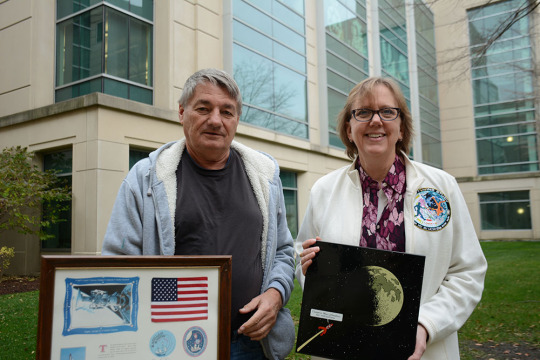
Credits: Northwestern University
Spaceflight has an on impact many bodily systems. Rodent Research-7 takes a look at how the microgravity environment of space affects the community of microoganisms in the gastrointestinal tract, or microbiota.
The study also evaluates relationships between system changes, such as sleep-wake cycle disruption, and imbalance of microbial populations, to identify contributing factors and supporting development of countermeasures to protect astronaut health during long-term missions, as well as to improve the treatment of gastrointestinal, immune, metabolic and sleep disorders on Earth.
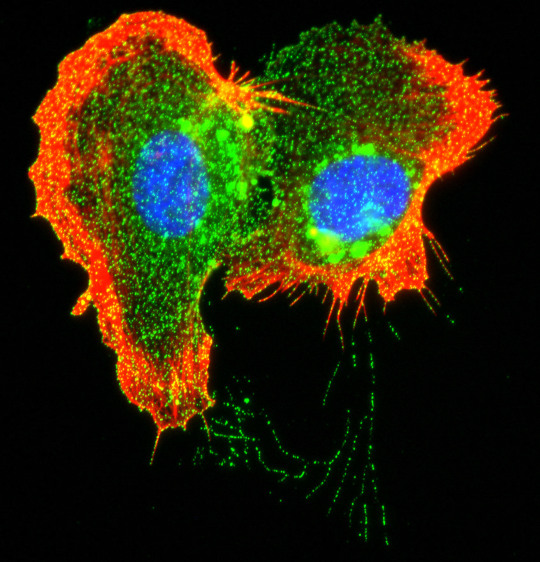
Credits: Angiex
Cardiovascular diseases and cancer are the leading causes of death in developed countries. Angiex Cancer Therapy examines whether microgravity-cultured endothelial cells represent a valid in vitro model to test effects of vascular-targeted agents on normal blood vessels.
Results may create a model system for designing safer drugs, targeting the vasculature of cancer tumors and helping pharmaceutical companies design safer vascular-targeted drugs.
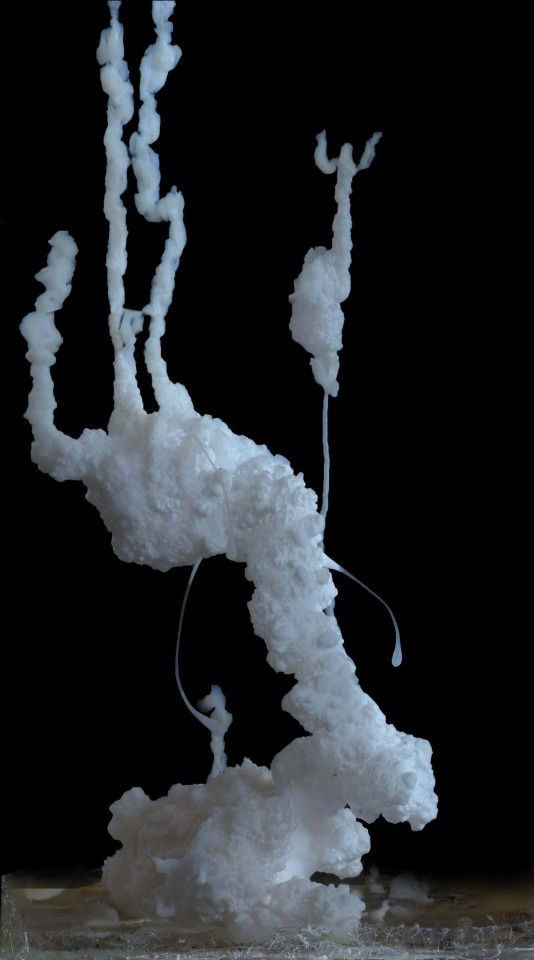
Credits: Oliver Steinbock chemistry group at Florida State University
Chemical Gardens are structures that grow during the interaction of metal salt solutions with silicates, carbonates or other selected anions. Their growth characteristics and attractive final shapes form from a complex interplay between reaction-diffusion processes and self-organization.

Credits: Oliver Steinbock chemistry group at Florida State University
On Earth, gravity-induced flow due to buoyancy differences between the reactants complicates our understanding of the physics behind these chemical gardens. Conducting this experiment in a microgravity environment ensures diffusion-controlled growth and allows researchers a better assessment of initiation and evolution of these structures.
These investigations join hundreds of others currently happening aboard the orbiting laboratory.
youtube
For daily updates, follow @ISS_Research, Space Station Research and Technology News or our Facebook. For opportunities to see the space station pass over your town, check out Spot the Station.
Make sure to follow us on Tumblr for your regular dose of space: http://nasa.tumblr.com
1K notes
·
View notes
Video
youtube
The Story of Nikola Tesla
260 notes
·
View notes
Photo

937 notes
·
View notes
Text
The effects of stress may filter right down to your brain's DNA.
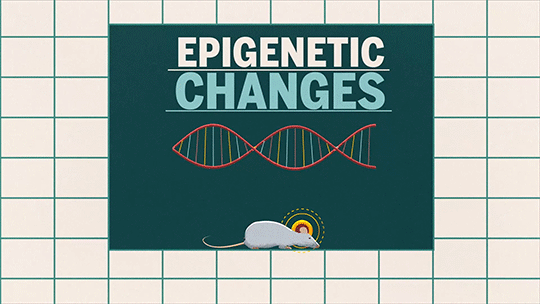
An experiment showed that the amount of nurturing a mother rat provides its newborn baby plays a part in determining how that baby responds to stress later in life.
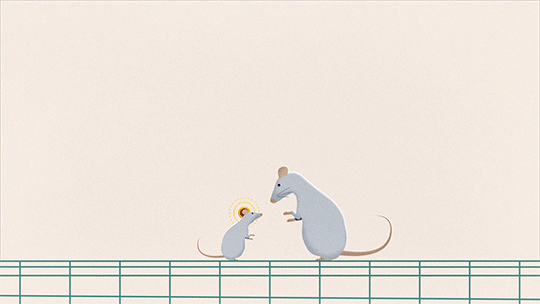
The pups of nurturing moms turned out less sensitive to stress because their brains developed more cortisol receptors, which stick to cortisol and dampen the stress response.

The pups of negligent moms had the opposite outcome, and so became more sensitive to stress throughout life. These are considered epigenetic changes, meaning that they effect which genes are expressed without directly changing the genetic code. And these changes can be reversed if the moms are swapped.

But there’s a surprising result. The epigenetic changes caused by one single mother rat were passed down to many generations of rats after her. In other words, the results of these actions were inheritable.
From the TED-Ed Lesson How stress affects your brain - Madhumita Murgia
Animation by Andrew Zimbelman
2K notes
·
View notes
Photo

Farewell, Mr Hawking. I’ll always look up.
22K notes
·
View notes
